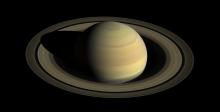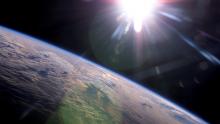Listen to today's episode of StarDate on the web the same day it airs in high-quality streaming audio without any extra ads or announcements. Choose a $8 one-month pass, or listen every day for a year for just $30.
You are here
More Solstice
Meteorologists will tell you that summer started on June 1st. Students in Spokane, Washington, will tell you that it started last week, when the school year came to an end. And astronomers will tell you it starts today, when the Sun is farthest north for the entire year.
All three dates are perfectly valid. The meteorological calendar, for example, groups the months by weather conditions. For the northern hemisphere, it’s hottest in June, July, and August, so it makes sense for summer to start on June 1st.
For many families, the calendar that really matters is the school calendar. It’s not as consistent as the other types of calendars, though. Depending on the district, classes can end anywhere from late May to mid June, so summer gets rolling on different dates. That means that summer ends on different dates, too — between mid-August and early September.
The astronomical seasons are based on the motions of the Sun across the sky. As Earth orbits the Sun, our star moves north and south across the sky. The Sun actually stays put. It appears to move because Earth is tilted on its axis. The north and south poles “nod” toward the Sun at different times of year.
The seasons are defined by four points in the Sun’s motion: when it appears farthest north and south, and when it crosses the equator. It’s farthest north today, at 10:54 a.m. Central Daylight Time — the summer solstice — the start of astronomical summer.






